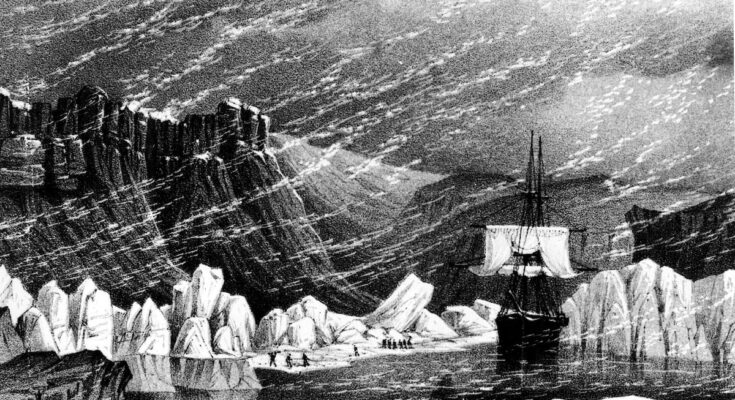Salt, sodium chloride, a substance that we use to season our meals, maintains a relationship, let’s call it ionic, with ice, since, by adding salt to ice water, what we achieve is mixing the water molecules with the sodium and chloride ions that make up the salt, preventing these water molecules from forming ice crystals when they reach 0°C.
For this reason salt is usually added to the soil when there is snow. However, the most suitable salt for melting snow is calcium chloride, which melts ice more quickly, having proven effective at temperatures of -30°C, while sodium chloride loses its effectiveness starting from -6°C. But let’s leave the technical data for the moment and return to sea salt, in this case that of the Arctic Ocean, where we discover a notable mixture between fresh and salty waters, with the fresh water found in the upper, colder and less dense layer, while the warmer and saltier waters are found in the lower layer. And, precisely for this reason, even denser.
With the drainage of the brine and its sinking due to the added weight, the exchange of masses occurs through the oceanic circulation of the waters of the North Pole, a phenomenon experienced by the men of the expedition who, in May 1845, headed towards the Arctic Ocean from the port of Greenhithe, England, with the aim of discovering the Northwest Passage – the sea route that crosses the Arctic bordering North America to the north. To carry out the mission, more than one hundred sailors were drafted onto two ships, HMS Erebus and HMS Terror.
Sir John Franklin was in charge of leading an expedition that was never heard from again until 14 years after his departure, when another expedition, led by Sir Francis Leopold McClintock, discovered the sign of the disaster in a mound of ice. From this historical material, the American writer Dan Simmons recreates the event in an exciting novel entitled The terror (Rock publishing).
To create this fiction based on real events, Dan Simmons managed exhaustive documentation. Meticulously, Simmons plays with the hypotheses of the time and does so in detail. Without going further, he cites the news that appeared in the Times newspaper, when experts assessed the possibility that the so-called Gulf Stream – the Atlantic current of warm water – was flowing upwards, warming the Arctic Ocean. Seen from afar, it was all so senseless that it was even proposed to send Southgate’s prisoners to the North Pole to mine coal. There was talk of the mineral wealth offered by the invisible continent.
Today the world, our world, is turning upside down. The Gulf Stream is weakening, causing harsher winters for Europe, while the warm, salty waters of the Atlantic are spreading northward, causing what is called Arctic atlantification, a phenomenon that causes the Arctic Ocean to melt and become warmer and saltier.
The world of John Franklin’s lost Arctic expedition has little or nothing to do with the world of today; and even less will it have to do with tomorrow, closer to the world in which Dan Simmons proposes The Songs of Hyperion (Nova), a series of science fiction novels that tells us how, in the 28th century, humanity expands across the galaxy after abandoning the Earth in a terminal state following the revolt of Artificial Intelligences against humans.
Not to be pessimistic, but Dan Simmons constructs his novels with past events, just as he does with future events; and achieves it without forgetting that we belong to a society dominated by its uncertain destiny.



